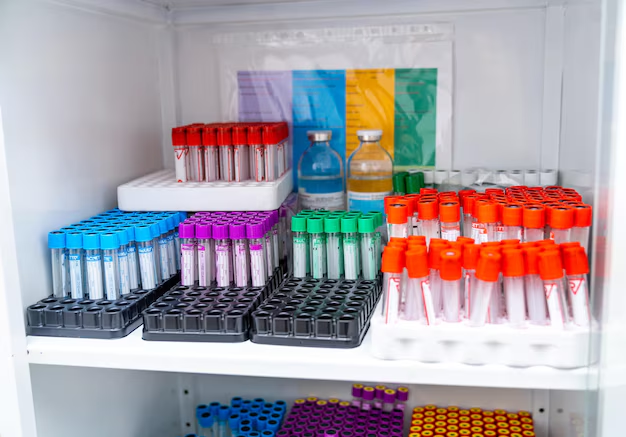Best Practices for Storing Insulin in Your Refrigerator
Keeping insulin at the right temperature is crucial for preserving its effectiveness. Storing it properly in the refrigerator is part of managing your everyday health. This guide provides practical tips and insights on the most effective ways to store insulin at home while ensuring that you're doing so safely and efficiently.
🧊 Why Proper Insulin Storage Matters
Insulin is a life-saving medication for individuals with diabetes. However, its efficacy can be compromised if it is not stored correctly. Extreme temperatures can degrade insulin, making it less effective or even ineffective. Refrigeration helps maintain the insulin's potency by preventing it from freezing or becoming too warm.
Key Takeaways:
- Insulin should be stored in a cool, consistent temperature to maintain its strength.
- Insulin should not freeze, as this damages its structure permanently.
🥶 Understanding the Ideal Storage Conditions
Temperature Guidelines
The optimal storage temperature for insulin is between 36°F to 46°F (2°C to 8°C). Most refrigerators maintain this range, but it’s always wise to check to ensure accuracy. Keeping an appliance thermometer in the refrigerator can help you maintain the correct setting.
Avoid Temperature Fluctuations
Avoid frequent temperature changes by storing insulin in the middle of the refrigerator. The fridge door is prone to temperature fluctuations due to frequent opening and closing, and storing insulin there can risk exposure to warmer temperatures.
Avoid:
- Storing insulin in the refrigerator door
- Placing insulin directly under the refrigerator's cooling unit, where it might freeze
📦 How To Store Insulin in the Refrigerator
When placing insulin in the refrigerator, it’s important to store it properly to ensure longevity and effectiveness.
Positioning and Organization
- Keep it in its original packaging: The packaging provides an extra layer of protection against temperature variations and light exposure.
- Group similar items together: Store all of your insulin in one place to maintain oversight and manage inventory effectively.
💡Pro Tip: Use a dedicated container to keep your insulin organized and easily accessible without disturbing its packaging.
Light and Airtight
- Protect from light: Insulin should ideally be stored away from direct light sources, which could decompose its ingredients.
- Ensure it's airtight: Keeping your insulin sealed reduces exposure to ambient air, which can carry contaminants that might affect the insulin's integrity.
📝 Storing Insulin On the Go
If you're traveling or need to store your insulin outside of a refrigerator, consider the following guidelines:
Portable Insulated Bags
Utilize a portable insulin cooler or cooler bag with ice packs to maintain the required temperature range while moving. Always pack extra supplies and monitor the temperature if possible.
Temporary Storage Solutions
For short periods of travel or during active use, insulin can be kept at room temperature for up to 28 days. Be mindful of environmental conditions, though, as hot climates can lead to degradation.
👀 Signs Your Insulin May Have Gone Bad
Recognizing the signs of degraded insulin can help maintain your health routine without setbacks:
- Change in clarity: If insulin that was once clear becomes cloudy, it might be spoiled.
- Precipitation or clumping: Visible particles or a thickened consistency indicate a problem.
- Unusual coloration: Discoloration might suggest contamination or breakdown.
If you notice any of these signs, contact a healthcare provider for advice on the next steps. Always err on the side of caution to prevent using compromised medicine.
🕒 Shelf Life and Rotation
To maximize your insulin’s shelf life, always adhere to the expiration dates and practice regular stock rotation:
- Check expiration dates regularly and ensure you’re using the oldest stock first.
- Monitor opened vials, as these have a shorter lifespan even when refrigerated.
Concluding Thoughts on Insulin Storage
Storing insulin correctly in your refrigerator is a simple yet effective way to ensure you’re maintaining its efficacy. By following these guidelines—maintaining the proper temperature, protecting from light, and monitoring the signs of degradation—you can rest assured that your insulin remains effective whenever you need it.
🌟 Summary of Tips
- Store insulin between 36°F to 46°F (2°C to 8°C). 📏
- Keep insulin in its original packaging, away from the fridge door. 📦
- Look for changes in clarity or color as signs of degradation. 👀
- When traveling, use coolers or insulated bags to maintain temperature. 🧳
By implementing these straightforward practices, you'll safeguard your health with confidence and ease, ensuring your insulin provides the reliable support you need.
